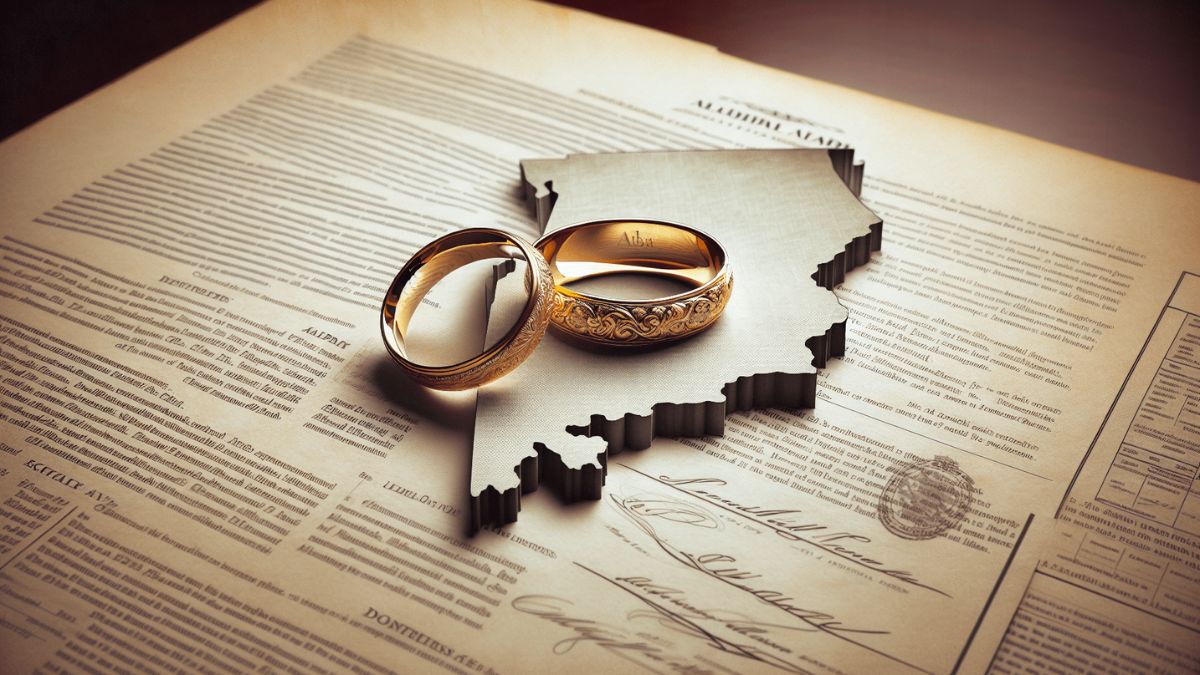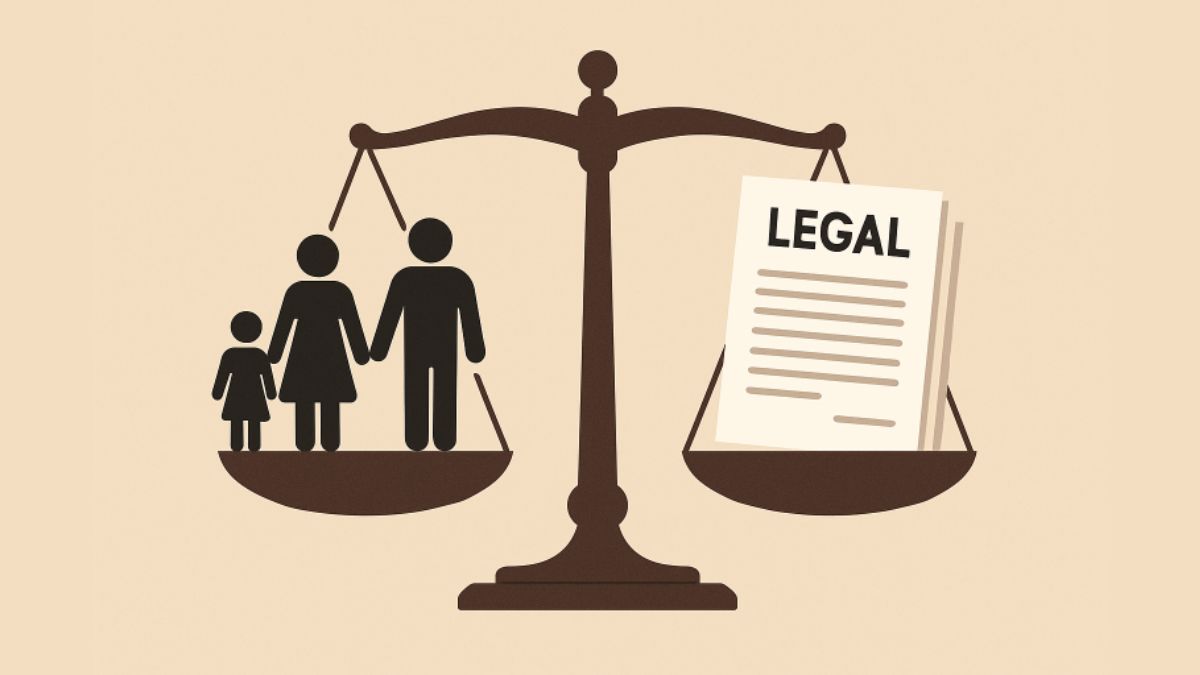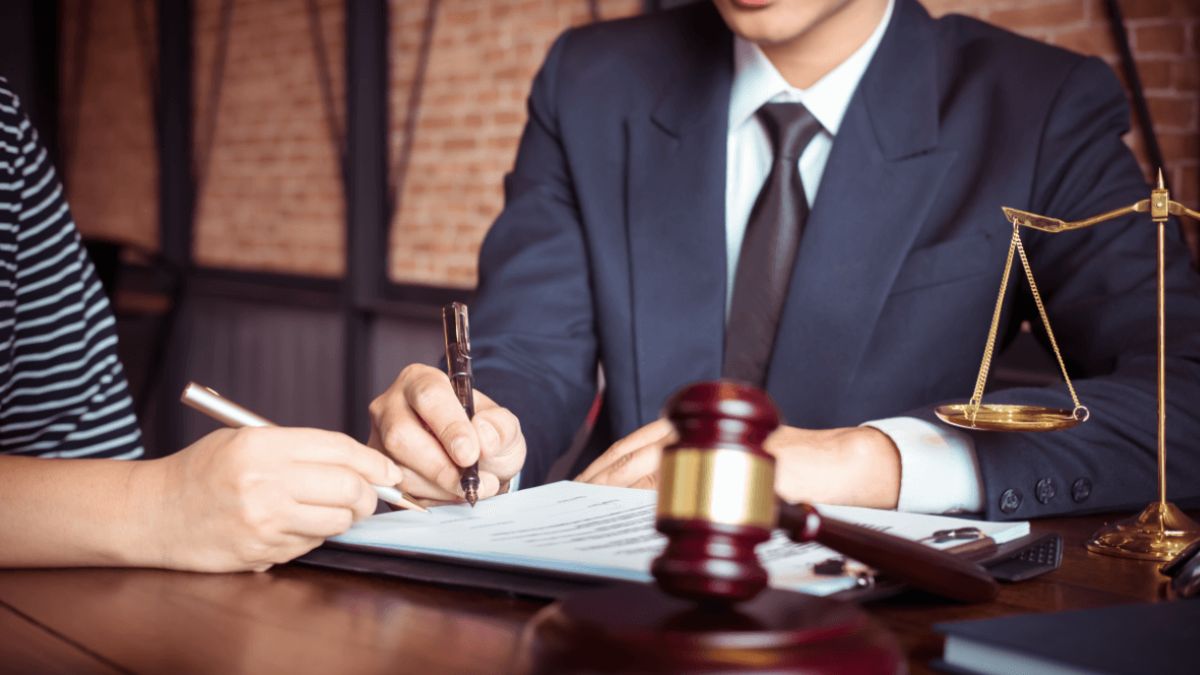LAW
How to File for Divorce in Alabama: A Step-by-Step Guide

Filing for divorce can be challenging, but knowing the process eases the burden. In Alabama, understanding the steps to file for divorce helps you move forward with clarity. This guide outlines the necessary steps to ease your journey. First, gather essential documents. These include your marriage license and any previous court orders. Next, understand Alabama’s residency requirements. You or your spouse must live in Alabama for at least six months. After meeting these conditions, consider if you need an Alabama divorce lawyer. While not required, legal guidance offers peace of mind and ensures accuracy. Then, choose the right type of divorce. Alabama offers uncontested or contested options. Uncontested divorces usually resolve quicker with less conflict. Filing for divorce is a life change, but you can navigate it with the right tools and information. Follow this guide to take decisive, informed steps toward a new chapter.
Understanding Divorce Types
Alabama provides two main types of divorce: contested and uncontested. Knowing the difference helps you decide which approach suits your situation best.
| Uncontested Divorce | Contested Divorce |
| Both parties agree on all terms | Disagreements exist over terms |
| Usually faster and less costly | Often involves litigation and higher costs |
| Minimal court involvement | Significant court involvement |
For an uncontested divorce, both parties need to agree on key issues like property division, child custody, and support. In contrast, a contested divorce requires a judge to resolve disputes.
Filing the Divorce Papers
Once you choose your divorce type, the next step is filing the papers. You need to file a Complaint for Divorce with the local circuit court clerk. This document outlines your desire to end the marriage.
After filing, you must serve the papers to your spouse. This process ensures they are aware of the impending divorce. You can do this through certified mail or a process server.
Residency Requirements and Waiting Period
In Alabama, residency is crucial. As mentioned, at least one spouse must have lived in the state for six months. After filing, Alabama imposes a waiting period of 30 days before the divorce can be finalized.
During this time, you might need to attend court hearings, especially if the divorce is contested. These hearings address temporary arrangements regarding custody or support.
Property Division and Alimony
Alabama follows equitable distribution for property division. This means the court divides marital property fairly, though not always equally. Factors include the length of the marriage and each spouse’s contribution.
Alimony might be ordered based on need and ability to pay. The court considers factors like the length of the marriage, the standard of living, and each spouse’s earning capacity.
Child Custody and Support
Decisions about children focus on their best interests. Alabama courts encourage shared custody, but one parent may receive primary custody. Factors include parental involvement and the child’s needs.
Child support calculations follow Alabama’s guidelines. They consider parental income and the number of children. You can find more details in the Alabama Child Support Guidelines.
Finalizing the Divorce
After the waiting period and addressing key issues, the court reviews the case. If everything meets legal standards, the judge signs the divorce decree. This document legally ends the marriage.
If your divorce is uncontested, the process can be straightforward. Contested divorces may take longer due to the need for resolution through court hearings.
Conclusion
Filing for divorce in Alabama involves several steps, but understanding each part makes the process more manageable. Begin by gathering necessary documents and meeting residency requirements. Choose the right divorce type and file the papers promptly. During the process, stay informed about property division, alimony, and child custody. Following these steps with clarity and focus helps you transition to a new chapter with confidence.
LAW
Family Law Basics: Key Issues and Solutions

Family law touches nearly every aspect of our most personal relationships, including marriage, separation, child custody, and financial arrangements after a separation. Understanding the foundations of family law can make navigating these highly emotional and complex issues less overwhelming and far more manageable. Many individuals facing family legal challenges turn to a family attorney Tampa for experienced legal support and guidance, especially when outcomes can significantly impact their families’ futures.
From creating legal unions to resolving child custody disputes, family law is designed to both protect and provide clarity for all parties involved. Whether you are preparing for marriage, facing divorce, or seeking a protective order, having a clear understanding of your rights and obligations is crucial. This knowledge not only empowers you to make informed decisions but also helps ensure that your family’s well-being remains the top priority in any legal process. With laws and regulations differing from state to state, staying informed and seeking timely legal counsel is often a wise first step.
Marriage and Legal Unions
Getting married is not only a significant emotional milestone, but it also constitutes a legal contract between two individuals. Family law regulates the process of legal unions, setting the requirements for age, consent, and state-specific documentation. Once married, both partners acquire certain legal rights and responsibilities, encompassing joint property rights, financial duties, healthcare decisions, and inheritance arrangements. These legal dimensions make marriage more than a personal promise; it’s a legal status that carries essential consequences.
Understanding the legal prerequisites for marriage, such as blood tests (in some states), license applications, and waiting periods, can be essential for couples planning to wed. Entering marriage with a solid knowledge of these requirements helps lay a strong legal and relational foundation.
Divorce and Legal Separation
Divorce marks the legal end of a marriage and can be a complex process involving emotional, financial, and logistical hurdles. States generally recognize two main approaches: no-fault divorce, which doesn’t require proof of wrongdoing, and fault-based divorce, which requires grounds such as abuse or infidelity. Divorce settlements typically encompass asset division, debt allocation, child custody arrangements, and ongoing support agreements.
Legal separation, an alternative for couples not ready for divorce, allows for the division of property and parental responsibilities while the marriage remains legally intact. This can provide a middle ground for couples grappling with reconciliation or religious reasons for avoiding divorce.
Child Custody and Visitation
When children are involved, custody arrangements become a critical aspect of family law. Courts make custody and visitation decisions with the child’s best interests in mind, considering factors like each parent’s stability, parenting ability, and the wishes of older children. There are several types of custody—legal, physical, joint, or sole—depending on the circumstances.
Visitation rights ensure that both parents can continue to be involved in their child’s life. Modern courts increasingly value maintaining meaningful relationships with both parents unless doing so would endanger the child’s safety or well-being.
Child Support and Alimony
Ensuring children have access to the resources they need is at the heart of child support law. Child support payments are designed to cover basic needs, such as housing, food, and healthcare, and may also include expenses for education and extracurricular activities. The calculation of support obligations typically considers parental income, custody arrangements, and the child’s specific needs.
FindLaw’s guide to child support provides a detailed overview of the process, including calculation methods and enforcement procedures.
Alimony, also known as spousal support, may be awarded when one spouse requires assistance in becoming financially independent after divorce. Courts weigh factors such as the length of marriage, earning potential, and each party’s contributions when determining if and how much alimony is paid.
Property Division
In a divorce, marital property (assets accumulated during the marriage) must be divided. Most states follow the principle of “equitable distribution,” aiming for a fair—though not necessarily equal—split based on the partnership and individual needs. Factors considered may include the duration of the marriage, both spouses’ contributions, and future financial prospects.
Debts incurred during the marriage—like mortgages or loans—are divided alongside assets. Understanding what qualifies as marital vs. separate property can help prevent conflicts during the legal process.
Adoption and Guardianship
Adoption provides a legal framework for individuals to become the lawful parents of a child who isn’t biologically theirs. The process is thorough, including background checks, home studies, and court hearings to ensure the child’s welfare. Adoption can be domestic, international, or through foster care systems.
Guardianship provides an alternative legal arrangement, enabling individuals to care for a child without relinquishing parental rights. It’s often used in cases where parents are unable to care for their child temporarily but wish to maintain their legal relationship.
Domestic Violence and Protective Orders
Protecting family members from harm is a vital function of family law. Victims of domestic violence can seek protective (or restraining) orders, which legally prevent abusers from contacting or approaching the victim. Courts act quickly to ensure safety, sometimes issuing immediate orders before a full hearing has taken place.
Support organizations and the National Domestic Violence Hotline provide essential resources and safety planning for individuals in abusive situations. Legal tools and community resources together play a crucial part in preventing harm and facilitating recovery.
Prenuptial and Postnuptial Agreements
Prenuptial and postnuptial agreements outline how future disputes over property and debts should be resolved in the event of divorce or death. These legally binding documents clarify expectations, prevent misunderstandings, and protect assets such as family businesses, inheritances, or premarital property.
While discussing such agreements can be sensitive, they often help foster transparency and trust by addressing financial matters before potential issues arise.
Family law encompasses a wide range of deeply personal issues, but receiving timely and knowledgeable legal guidance can provide clarity and peace of mind. By educating yourself about your rights and obligations, and considering experienced legal help when necessary, you can ensure that your interests and your family’s well-being are protected throughout every step of the process.
LAW
Defense Attorney Near Me

You may find yourself searching for a defense attorney near me during times of stress or uncertainty. When facing legal challenges, having the right defense attorney by your side is crucial. They stand as your guide, offering strong support and clear advice. This decision is not just about location. It’s about choosing someone who listens, understands, and fights for you. A nearby defense attorney often offers more than convenience. They can provide local insight and quick response times. You deserve to feel confident and secure knowing you have a dedicated professional in your corner. You want someone who understands the weight of your situation and is ready to take immediate action. Navigating the legal world can be overwhelming, but with a trusted defense attorney nearby, you are not alone. They will walk with you, ensuring that your rights are protected and your voice is heard.
Understanding the Role of a Defense Attorney
A defense attorney is your legal protector. They represent you in criminal cases, working tirelessly to ensure your side of the story is heard. Their responsibilities include gathering evidence, interviewing witnesses, and crafting a strong legal strategy. This role demands not only legal skills but also empathy and dedication. Your attorney serves as both an advocate and a counselor, guiding you through complex legal processes. According to the United States Courts, understanding your rights and the intricacies of the legal system can significantly impact the outcome of your case. By selecting an attorney who is both skilled and compassionate, you set the stage for the best possible defense. For more detailed information on criminal laws and penalties, visit the Law Office of Michael Stefanos.
Why Local Matters
Choosing a “defense attorney near me” is more than a matter of convenience. Local attorneys bring an understanding of regional laws and court systems, which can be invaluable. They often have established relationships within local legal circles, which can facilitate more effective communication and negotiation. Being nearby allows them to dedicate more time to your case, offering the advantage of immediacy in actions and decisions. Furthermore, their proximity often translates to better availability for meetings and court appearances. This local advantage can be crucial in developing a tailored defense strategy that considers all aspects of your case.
Factors to Consider When Choosing a Defense Attorney
When selecting a defense attorney, consider these key factors:
- Experience: Look for an attorney with a proven track record in similar cases.
- Communication: Ensure they communicate clearly and are available to answer your questions.
- Reputation: Research online reviews and seek recommendations from trusted sources.
Choosing the right attorney can profoundly affect your case’s outcome. For help with finding a lawyer, you might consult resources like the American Bar Association.
Potential Costs Involved
Understanding the potential costs involved in hiring a defense attorney is essential. Legal fees can vary widely based on experience, case complexity, and location. Here’s a simple comparison to help you understand general expectations:
| Service | Average Cost |
|---|---|
| Initial Consultation | Free to $300 |
| Hourly Rate | $150 to $700 |
| Flat Fee for Misdemeanor | $1,000 to $3,000 |
| Flat Fee for Felony | $3,000 to $10,000+ |
Discuss cost structures with potential attorneys upfront. Ask about any additional fees and understand what services are included.
The Importance of Trust
Trust is the foundation of any attorney-client relationship. You should feel comfortable sharing sensitive information with your attorney. If you feel unsure or uneasy, it may be wise to continue your search. An attorney who listens and responds with understanding helps build the trust necessary for a collaborative relationship. This trust will be crucial as you work together to build a defense that aligns with your needs and expectations.
Final Thoughts
Facing legal challenges is never easy. However, with a “defense attorney near me,” you gain a partner who understands the legal landscape and is committed to your defense. Whether you’re navigating a minor issue or a more serious charge, the right attorney provides the guidance and support you need. Take the time to research and choose someone who aligns with your values and needs. Doing so can significantly influence the journey ahead, offering peace of mind and a positive impact on your case’s outcome.
LAW
What To Do If Your Ex Stops Paying Court Ordered Support

Dealing with the sudden halt of court-ordered support can shake your stability. Whether it’s child support or spousal maintenance, you’re left wondering how to manage. Immediate action is needed to address this issue. You are not alone in facing this challenge. Many encounter this roadblock, and there are clear steps to follow. First, understand the factors that influence support payments. You may ask, “What is alimony?” Alimony is financial support from one ex-spouse to another post-divorce. It ensures financial fairness and continuity. When these payments stop, it disrupts your planned financial security. Start by reviewing your court order. Check the specifics of the payment terms. Confirm whether the non-payment was accidental or intentional. If intentional, the next step is to contact the legal system. Your local courthouse or legal aid organization can guide you. Remember, time is critical. Addressing the situation swiftly helps secure your financial future.
Steps to Take
When your ex stops paying, follow these steps. First, examine the court order. This order lists the payment amount and schedule. Make sure you know these details. If there is a misunderstanding, clarify it with your ex. Communication might solve the issue quickly.
Next, gather evidence of missed payments. Collect bank statements or payment records. These documents are crucial if you need to take legal action. Then, contact a legal professional or family law advisor. They can offer guidance. Legal aid offices often provide assistance at low or no cost. Access more information about legal aid through Legal Services Corporation.
Contact the Court
If payments do not resume, you may need court intervention. File a complaint about non-payment. The court can enforce the original order. Possible actions include wage garnishment or contempt of court charges. The court’s involvement signals seriousness and often prompts payment. Understand that court procedures can vary by location. Ensure you follow the correct process by consulting your courthouse.
Options for Support Enforcement
Various enforcement options exist. Wage garnishment involves automatically deducting payments from wages. Seizing tax refunds is another possibility. The court might also impose fines or suspend licenses. These measures encourage compliance with orders.
Comparison of Enforcement Options
| Enforcement Option | Action Taken | Effectiveness |
|---|---|---|
| Wage Garnishment | Directly deducts payment from wages | Highly effective |
| Seizing Tax Refunds | Redirects tax refunds | Effective |
| Suspending Licenses | Revokes driving or professional licenses | Moderately effective |
| Fines and Penalties | Imposes additional financial penalties | Moderately effective |
Seek Mediation
Mediation might be a viable option. It offers a neutral ground for discussion. Mediators help each party reach an agreement. This path often resolves conflicts without court involvement. Resources for mediation can be found at local family courts or community centers.
Consider Long-term Solutions
Think about the long-term financial impact. Adjust your budget to account for missed support. Explore financial planning resources. Consider job training or education programs to increase earnings. Your stability is a priority.
Conclusion
When your ex stops paying court-ordered support, it creates stress. Yet, you have options to regain control. Start with understanding, communication, and documentation. Then, move to legal avenues if necessary. Consider mediation for peaceful resolution. Finally, secure your financial future by planning for changes. Take these steps to empower yourself and ensure your family’s wellbeing.
-

 FASHION10 months ago
FASHION10 months agoTop Kids Clothing Trends for 2025 – What’s In Style This Year?
-

 FASHION1 year ago
FASHION1 year agoElegant Winter Party Style: Trendy Long-Sleeve Dresses and Essential Hair Care Tips
-

 BUSINESS1 year ago
BUSINESS1 year agoHOW TO SHOP GOODWILL OUTLET STORE
-

 AUTOMOTIVE10 months ago
AUTOMOTIVE10 months agoMitsubishi Pajero 3.0 V6 – Specs, Performance & Guide
-

 HOME10 months ago
HOME10 months agoTributePrintedPics Review: A Deep Dive into Quality, Design, and Customer Experience
-

 CULTURE10 months ago
CULTURE10 months agoUncuymaza Unveiled: The Cultural Significance Behind the Craft
-

 LIFESTYLE9 months ago
LIFESTYLE9 months agoDiscovering Luuxly.com: Your Ultimate Guide to Luxury Lifestyle
-

 TECHNOLOGY10 months ago
TECHNOLOGY10 months agoztec100.com: Your Ultimate Guide to Cutting-Edge Tech Solutions
